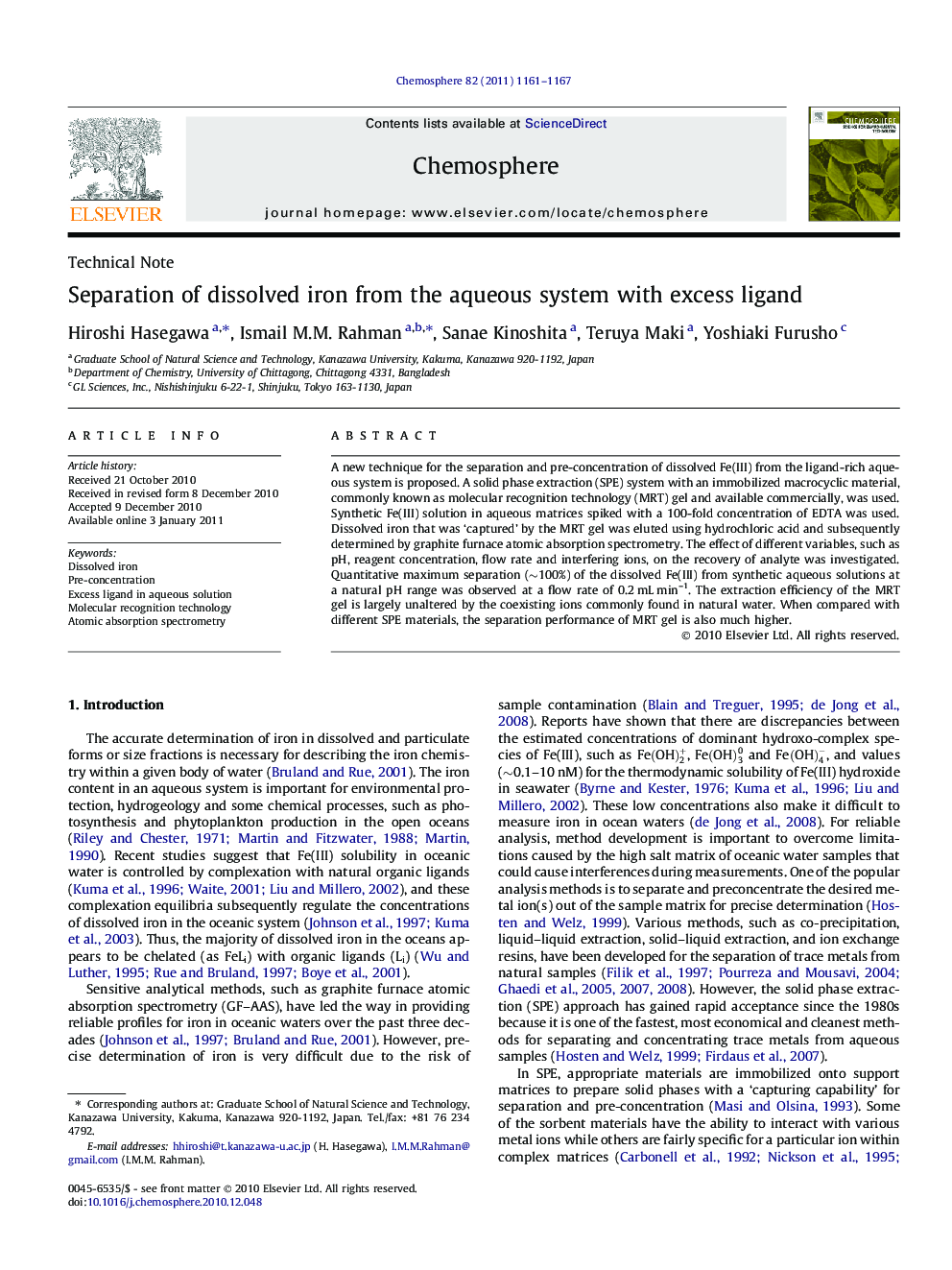| Article ID | Journal | Published Year | Pages | File Type |
|---|---|---|---|---|
| 4411405 | Chemosphere | 2011 | 7 Pages |
A new technique for the separation and pre-concentration of dissolved Fe(III) from the ligand-rich aqueous system is proposed. A solid phase extraction (SPE) system with an immobilized macrocyclic material, commonly known as molecular recognition technology (MRT) gel and available commercially, was used. Synthetic Fe(III) solution in aqueous matrices spiked with a 100-fold concentration of EDTA was used. Dissolved iron that was ‘captured’ by the MRT gel was eluted using hydrochloric acid and subsequently determined by graphite furnace atomic absorption spectrometry. The effect of different variables, such as pH, reagent concentration, flow rate and interfering ions, on the recovery of analyte was investigated. Quantitative maximum separation (∼100%) of the dissolved Fe(III) from synthetic aqueous solutions at a natural pH range was observed at a flow rate of 0.2 mL min–1. The extraction efficiency of the MRT gel is largely unaltered by the coexisting ions commonly found in natural water. When compared with different SPE materials, the separation performance of MRT gel is also much higher.
Research highlights► Separation of dissolved Fe(III) from the ligand-rich aqueous system. ► Immobilized macrocyclic material containing solid phase extraction system is used. ► The separation process is ion-selective, and based on molecular recognition. ► The extraction efficiency is quantitative at natural pH range.
